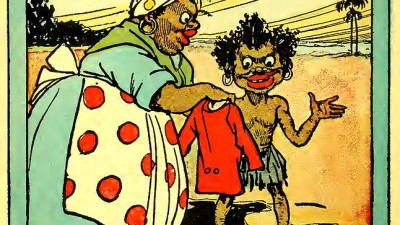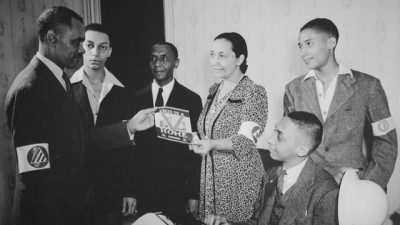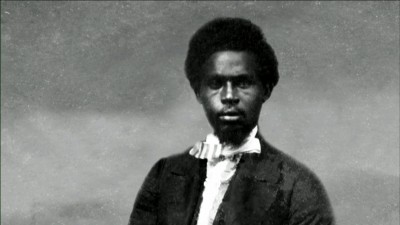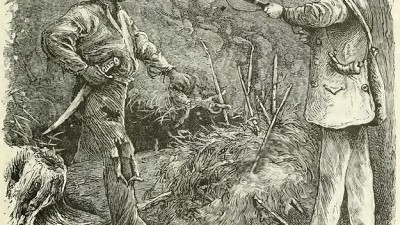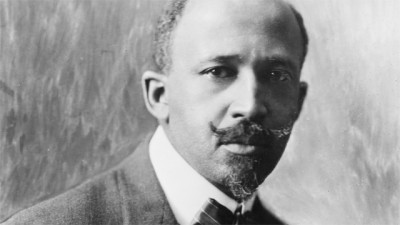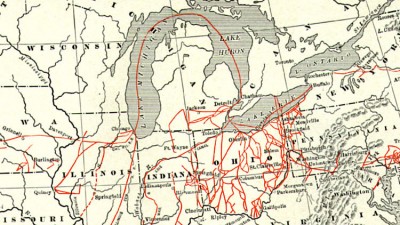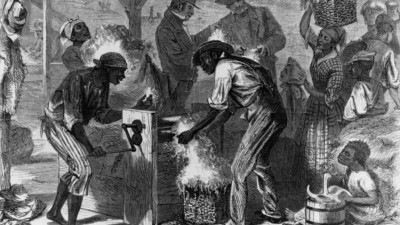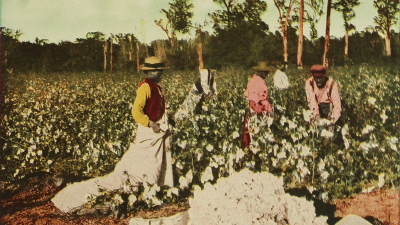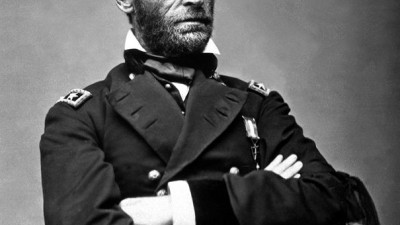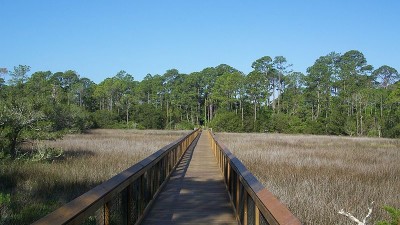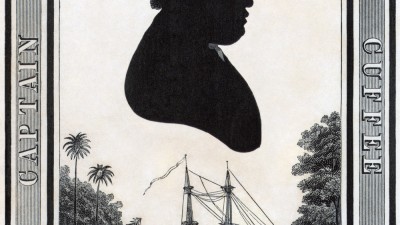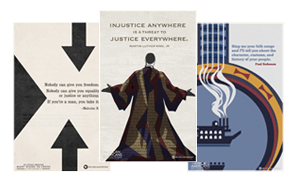Henry Louis Gates, Jr.'s
100 Amazing Facts About the Negro
Should Blacks Collect Racist Memorabilia?
I have a confession to make: I collect racist memorabilia. Perhaps it is because my mother seems to have as well. She kept a very small ashtray on a table in our living room featuring a Black Sambo figurine at its center. Since neither of our parents ever smoked, I know Mom didn’t buy this object for its function; she bought it because she was intrigued, just as I was, even as a child. Why was this boy so very black — jet black, the blackest of blacks — and why was he depicted as naked? Again and again in idle moments, I would be drawn to the plight of this little black boy, frozen for all time in a racist form of in extremis, I guess one might say, with the reddest and thickest of lips, the whitest of eyes and the unutterably blackest of skin. Continue reading
What Was Black America’s Double War?
The Double V Campaign during World War II urged black people to give their all for the war effort, while at the same time calling on the government to do all it could to make the rhetoric of the Declaration of Independence and the equal rights amendments to the Constitution real for every citizen, regardless of race. Continue reading
Which Slave Sailed Himself to Freedom?
Just before dawn on May 13, 1862, Robert Smalls and a crew composed of fellow slaves, in the absence of the white captain and his two mates, slipped a cotton steamer off the dock, picked up family members at a rendezvous point, then slowly navigated their way through the harbor. Smalls, doubling as the captain, even donning the captain’s wide-brimmed straw hat to help to hide his face, responded with the proper coded signals at two Confederate checkpoints, including at Fort Sumter itself, and other defense positions. Cleared, Smalls sailed into the open seas. Once outside of Confederate waters, he had his crew raise a white flag and surrendered his ship to the blockading Union fleet. Continue reading
Did African-American Slaves Rebel?
One of the most pernicious allegations made against the African-American people was that our slave ancestors were either exceptionally “docile” or “content and loyal,” thus explaining their purported failure to rebel extensively. Some even compare enslaved Americans to their brothers and sisters in Brazil, Cuba, Suriname and Haiti, the last of whom defeated the most powerful army in the world, Napoleon’s army, becoming the first slaves in history to successfully strike a blow for their own freedom. Continue reading
Was Jackie Robinson Court-Martialed?
Robinson’s struggle for equality began in the Army, before he integrated baseball in 1947. Lt. Jack Roosevelt Robinson was actually court-martialed in 1944! Court-martials are military courts, usually consisting of a panel of commissioned officers who conduct a criminal trial. There are three types of courts-martial: Summary Court-Martial, Special Court-Martial and General Court-Martial. Robinson faced a General Court-Martial. Continue reading
Who Really Invented the ‘Talented Tenth’?
Who originated the concept of the “Talented Tenth” black leadership class? Just about everybody who knows anything about black history and/or Dr. W.E.B. Du Bois knows that one of the most important concepts of the many that he defined was “the Talented Tenth.” Many of us even committed to memory the first two sentences of perhaps his most famous essay, published in 1903 in a book called The Negro Problem, and edited by Du Bois’s nemesis, Booker T. Washington: “The Negro race, like all races, is going to be saved by its exceptional men. The problem of education, then, among Negroes must first of all deal with the Talented Tenth; it is the problem of developing the Best of this race that they may guide the Mass away from the contamination and death of the Worst, in their own and other races.” Continue reading
Who Really Ran the Underground Railroad?
Few institutions from the black past have attracted more attention recently from teachers, students, museum curators and the tourism industry than the Underground Railroad, one of the most venerable and philanthropic innovations in our ancestors’ long and dreadful history in human bondage. But in the zeal to tell the story of this great institution, legend and lore have sometimes overwhelmed historical facts. Continue reading
Why Was Cotton ‘King’?
Cotton was one of the world’s first luxury commodities, after sugar and tobacco, and was also the commodity whose production most dramatically turned millions of black human beings in the United States themselves into commodities. Cotton became the first mass consumer commodity. Continue reading
What Was the Second Middle Passage?
Thanks to the Trans-Atlantic Slave Trade Database, edited by David Eltis and David Richardson, we know that about 388,000 Africans were transported directly to the United States over the course of the slave trade, which ended officially in 1808. This brutally cruel and disruptive phase of the trade, as all American schoolchildren should be taught, is known as “the Middle Passage.” But what is often left out of many survey courses is the second Middle Passage, and that dark chapter in American history involved far more black people than were taken from Africa to the United States. It was also uniquely cruel and brutally destructive. And it unfolded during the era when cotton was “king.” Continue reading
The Truth Behind ’40 Acres and a Mule’
We’ve all heard the story of the “40 acres and a mule” promise to former slaves. It’s a staple of black history lessons, and it’s the name of Spike Lee’s film company. The promise was the first systematic attempt to provide a form of reparations to newly freed slaves, and it was astonishingly radical for its time, proto-socialist in its implications. In fact, such a policy would be radical in any country today: the federal government’s massive confiscation of private property — some 400,000 acres — formerly owned by Confederate land owners, and its methodical redistribution to former black slaves. What most of us haven’t heard is that the idea really was generated by black leaders themselves. Continue reading
What Was America’s First Black Town?
Sometime between March and November of 1738, Spanish settlers in Florida formed a town named Gracia Real de Santa Teresa de Mose, two miles to the north of St. Augustine. Initially, it consisted of 38 men, all fugitive slaves, “most of them married,” who had fled to Florida for sanctuary and freedom from enslavement in the Carolinas and Georgia. It came to be known as Fort Mose. Continue reading
Who Led the First Back-to-Africa Effort?
The person who spearheaded “the first, black initiated ‘back to Africa’ effort in U.S. history,” according to the historian Donald R. Wright, was also the first free African American to visit the White House and have an audience with a sitting president. He was Paul Cuffee, a sea captain and an entrepreneur who was perhaps the wealthiest black American of his time. Continue reading
Find educational resources related to this program - and access to thousands of curriculum-targeted digital resources for the classroom at PBS LearningMedia.
Visit PBS Learning Media

